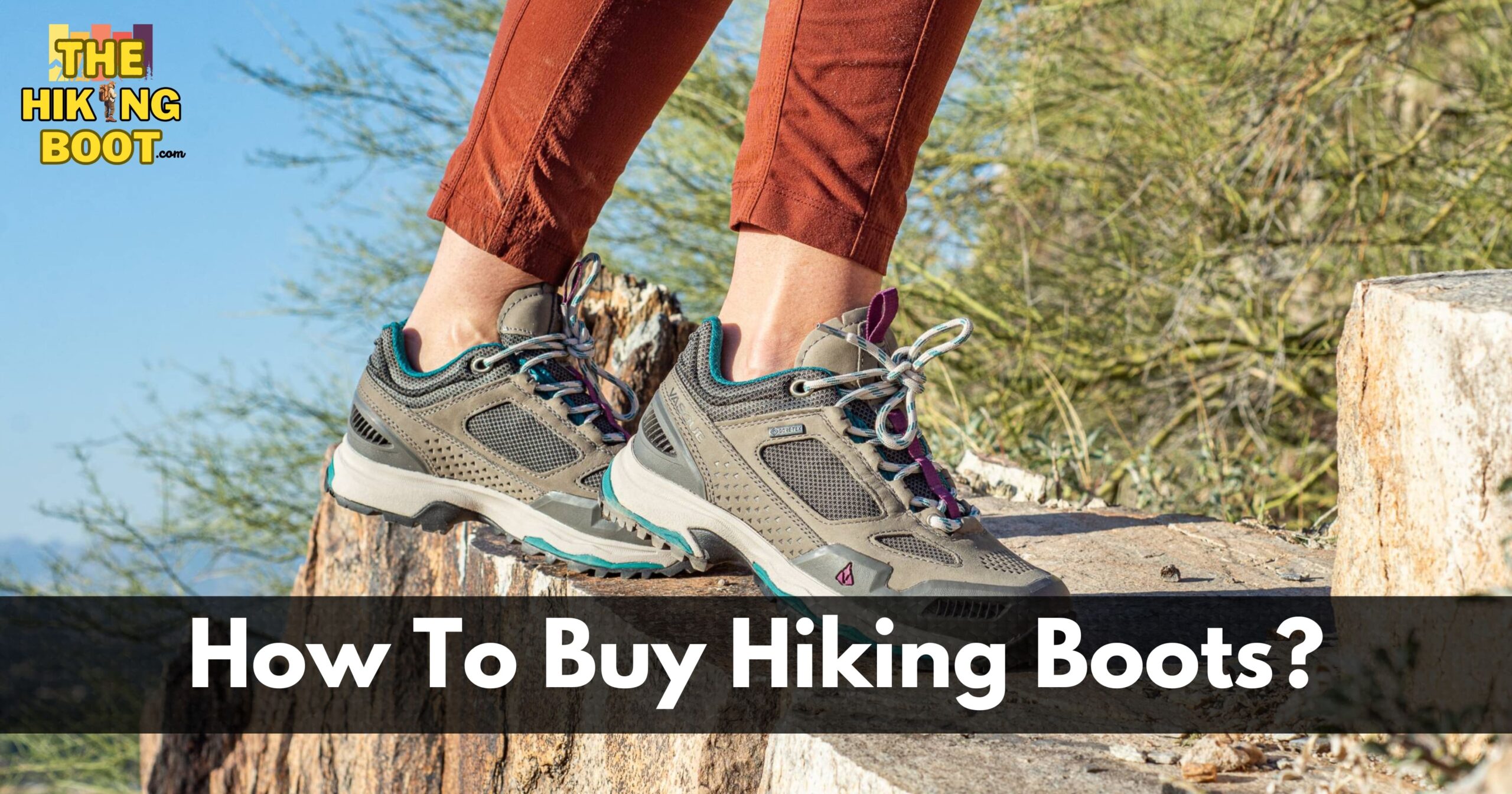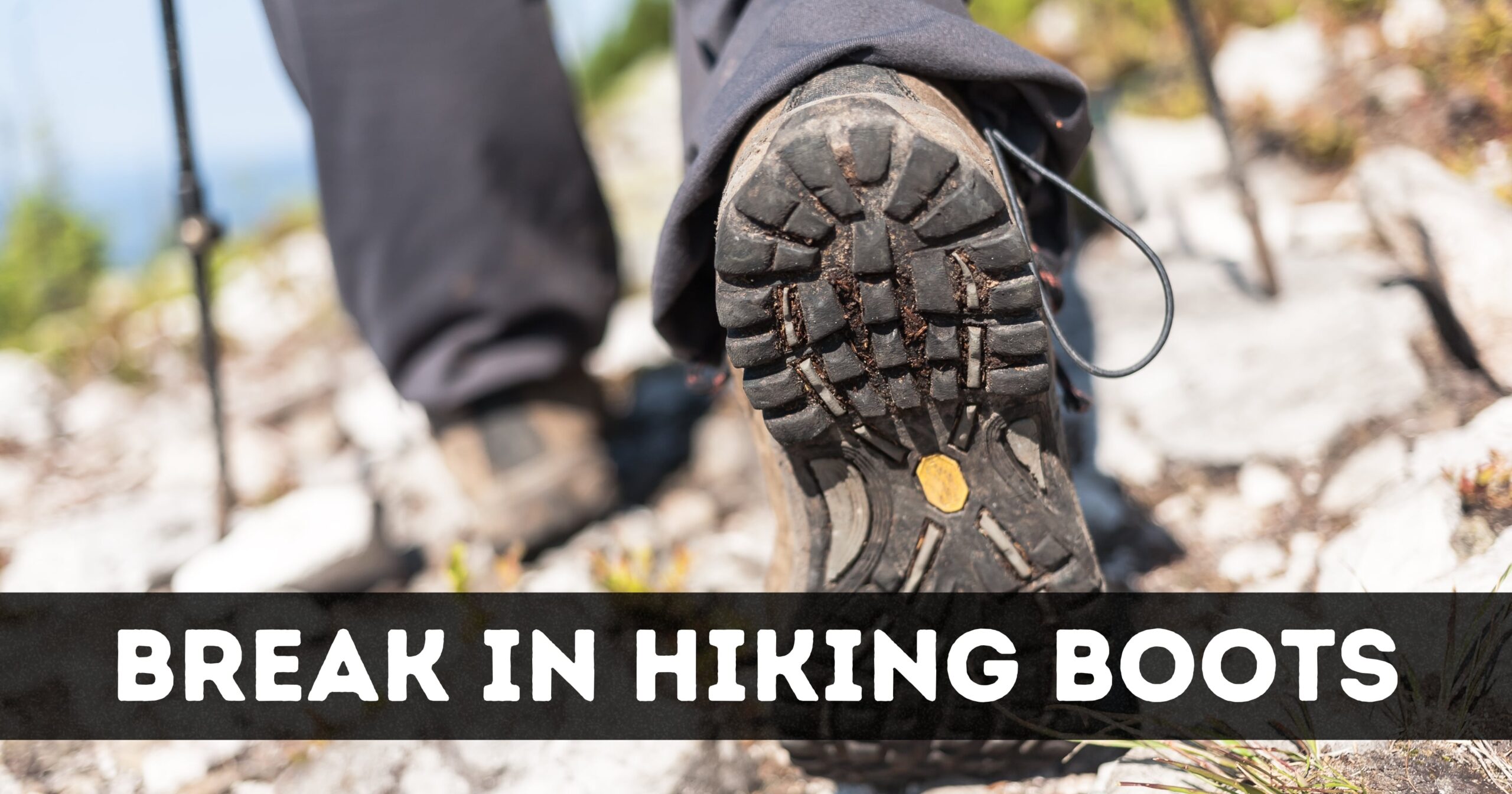When finding the proper hiking boots for your next adventure, you want something durable, lightweight, and comfortable enough so your feet don’t suffer during long treks.
Knowing your exact shoe size is essential before shopping for hiking boots.
It’s a good idea to wear the same type of socks that you intend to wear during your hikes.
Thicker socks provide extra cushioning and add to the insulation’s overall comfort. So, bring along a pair of thick socks when you’re trying on new hiking boots.
What makes the perfect pair of hiking boots? At first glance, they may all seem identical, but a few key features can make or break a quality outdoor adventure shoe.
From traditional leather boots to trail running shoes and even lightweight hikers with Gore-Tex liners, this comprehensive guide will help you find the best footwear for any terrain.
In this blog post, we discuss how to buy hiking boots.
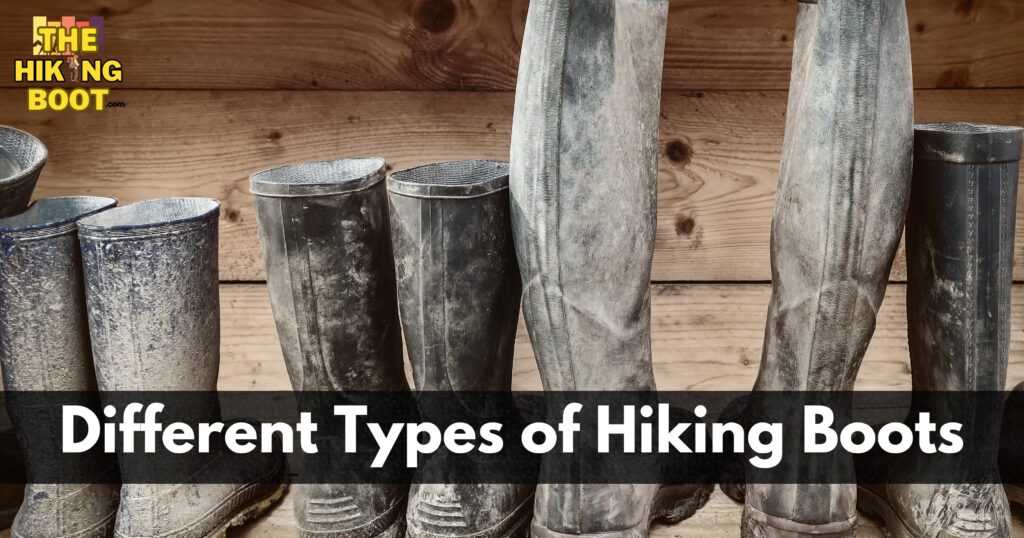
Understand the Different Types of Hiking Boots
Low-Cut Hiking Shoes
Low-cut hiking shoes are famous for day hikes and short backpacking trips.
Mid-Cut Hiking Boots
Mid-cut boots offer more ankle support and stability than low-cut models, making them ideal for day hikes on uneven terrain or short trips into the backcountry.
High-Cut Hiking Boots
High-cut boots are built with a taller, stiffer upper to provide stability and support when climbing steep trails or carrying heavy loads.
Trail Running Shoes
Trail running shoes are designed to provide the same flexibility and grip as road running shoes but with extra cushioning and support on rocky terrain.
Mountaineering Boots
Mountaineering boots are designed for extreme conditions and offer the most support, insulation, and waterproofing of any hiking boot.
Approach Shoes
Approach shoes are a hybrid of climbing and hiking footwear designed to provide the support and agility you need to tackle technical terrain.
Winter Hiking Boots
Winter hiking boots are designed with additional insulation and waterproofing to keep your feet warm and dry in cold, wet conditions.
Backpacking Boots
Backpacking boots are designed for long-distance treks and offer more support and protection than any other type of hiking boot.
Lightweight Hiking Boots
Lightweight hiking boots are designed for fast-paced day hikes or ultralight backpacking trips, offering the same lightweight construction and support as traditional trekking shoes with fewer features.
Now you can easily choose your favorite boots by understanding the different types of hiking boots.
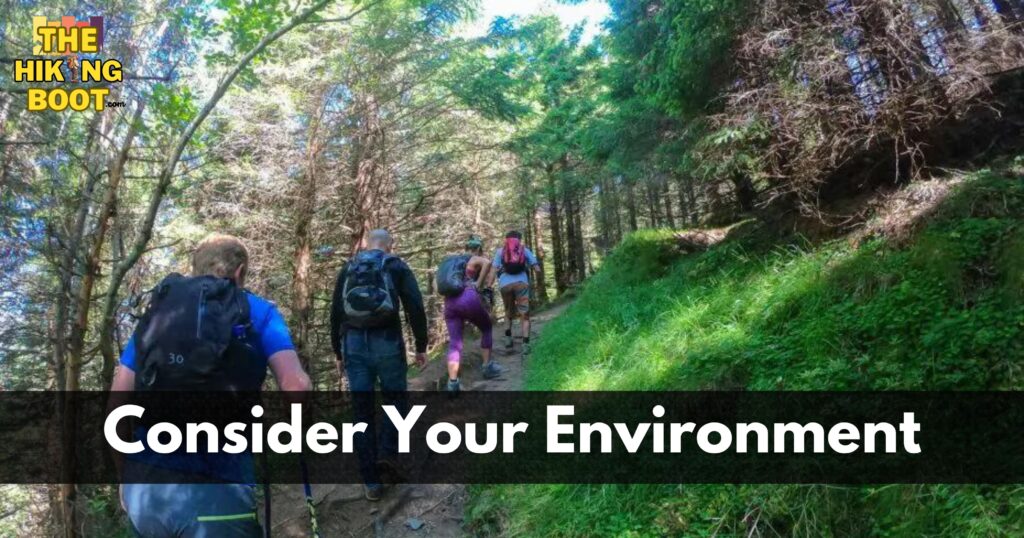
Consider Your Environment
The type of terrain you’ll be navigating is a significant factor to consider in how to buy hiking boots.
If you are trekking through rocky terrain or up steep trails, look for boots with aggressive tread patterns and solid traction that will help keep you from slipping.
If you plan to climb mountains, choose a boot with a stiff sole and extra support around the ankle that can withstand the rigors of off-trail travel.
For long-distance backpacking trips, you’ll want a boot with plenty of cushioning and arch support to reduce fatigue.
Consider the Level of Comfort Needed For Your Trip
Comfort is a paramount consideration when choosing your hiking boots.
It’s one thing to have a durable, lightweight boot designed for your environment. Still, your hiking experience can quickly turn from enjoyable to torturous if it’s uncomfortable.
Comfort level varies from person to person, and what may feel like a cloud to one person can feel like a stone to another. It’s all about personal preference.
Getting the Right Fit
Here, we guide how to buy hiking boots.
The right fit is crucial to achieving the desired level of comfort.
Your boots should be snug but not too tight, with enough room to wiggle your toes.
When trying on boots, try them on with the socks you plan to hike in.
Your foot should fit squarely in the boot, and there should be no pressure points or areas where the boot rubs against your foot.
It can be beneficial to try on boots at the end of the day when your feet are at their largest.
Break-In Period
Most hiking boots require a break-in period before they become comfortably wearable.
During this time, the boots mold to the shape of your feet, offering a customized fit.
Consider wearing your new boots around the house or on short walks before taking a long hike.
Insole & Cushioning
The insole and cushioning also contribute to the comfort of the hiking boots.
High-quality hiking boots come with cushioned insoles that provide arch support and conform to your foot’s shape.
Some hiking boots come with removable insoles, allowing you to replace them with custom orthotics if necessary.
Ankle Support & Padding
Ankle support and padding can make a difference, especially on uneven terrain.
Boots with adequate ankle support help prevent twisting and injuries, while additional padding reduces the chance of blisters and hot spots.
Remember, the best hiking boot is the one that fits you best and meets your specific needs.
Prioritize comfort as you navigate the options, making your hiking adventures more enjoyable.
Think About the Type of Terrain You’ll Be Exploring
The terrain you’ll be exploring significantly impacts the type of hiking boots you should buy.
A light hiking shoe or boot will suffice for flat, well-maintained trails.
These are usually breathable and comfortable and provide ample support for such environments.
If you tackle muddy trails or off-trail hiking, a pair with waterproof features and aggressive tread for traction will be more suitable.
For rocky, rugged trails or mountainous terrains, consider boots with high ankle support, stiff soles, and substantial durability to withstand repeated encounters with rocks and roots.
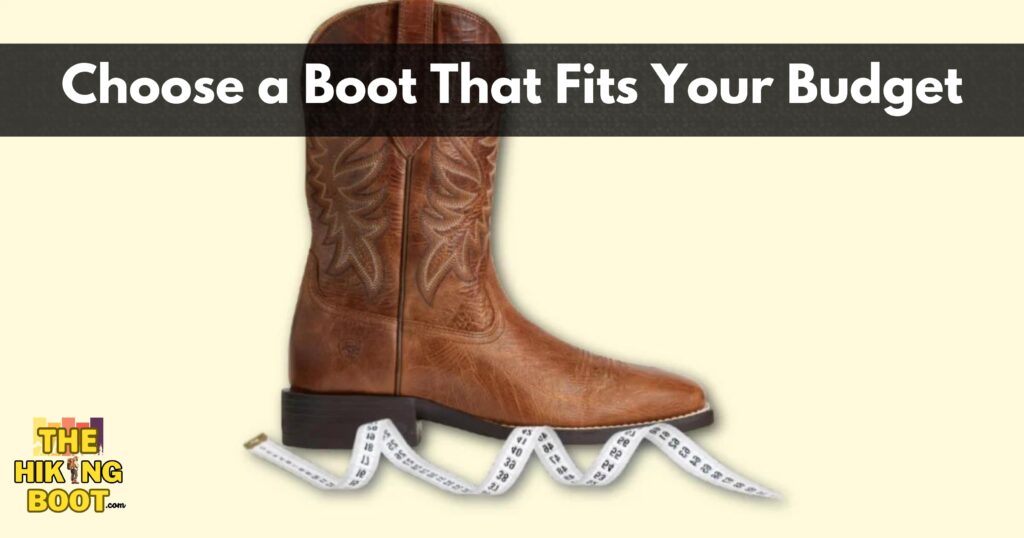
Choose a Boot That Fits Your Budget
Hiking boots can be expensive, but that doesn’t mean you have to pay a fortune for a pair.
You don’t need an expensive boot to be comfortable and perform well outdoors.
Quality mid-range boots offer plenty of features without breaking your budget.
You can also look for gently used or refurbished options and take advantage of sales from quality brands like Merrell, KEEN, and Salomon.
So research to find the right boot at a price that works for you.
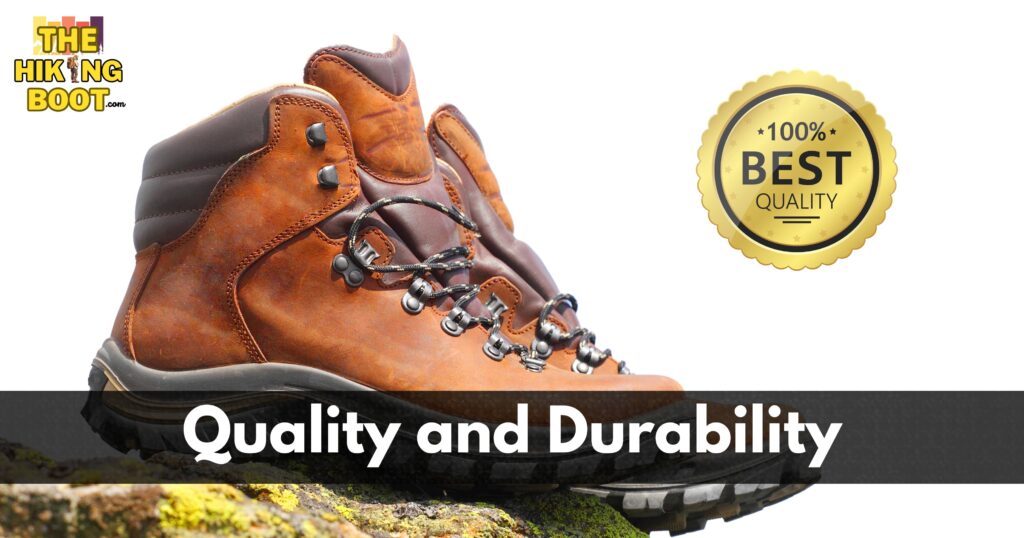
Know What to Look for in Quality and Durability
When shopping for hiking boots, always look for quality and durability.
Hiking boots that are lightweight yet sturdy enough to withstand long treks should be a priority.
Look for features like waterproofing, breathability, cushioning, and traction on the boot’s sole.
Pay attention to stitching details indicating how durable a pair of shoes is; ensure every stitch is even and tight.
Check the boot’s laces and look for reinforced eyelets to prevent them from coming loose during hikes.
Quality hiking boots should also have cushioning in the midsole that protects your feet from shock while walking over rocks or uneven terrain. Consider
Read Reviews and Ask Questions From Experienced Hikers
Reading reviews from experienced hikers can be very helpful in determining whether a particular pair of hiking boots is right for you.
Experienced hikers are familiar with the features and qualities to look for when buying shoes and may have firsthand knowledge about specific brands or models.
Consider asking friends, family members, or coworkers who have gone on long-distance hikes what type of boot they would
Conclusion
This is the conclusion about how to buy hiking boots.
When shopping for hiking boots, there are a lot of factors to consider. Factors such as terrain type, level of comfort needed, budget, quality, and durability should all be considered. It’s also essential to ensure you have the right fit and that your feet can move comfortably within the boot without any pressure points. Additionally, reviews and advice from experienced hikers can be invaluable when selecting the perfect pair of hiking boots. With some research and knowledge, you’ll find the right pair of hiking boots for your outdoor adventures. Happy trails!
Bonus Tip: Take Care of Your Hiking Boots
Taking care of your hiking boots is essential to maximize lifespan and performance.
After every hike, brush off accumulated dirt or mud and clean the outsoles with a stiff-bristled brush.
Dry your boots in a well-ventilated area away from direct heat sources.
If they get soaked during a hike, stuff them with newspaper to help absorb moisture and prevent them from shrinking.
Lastly, apply leather conditioner or waterproofing spray every few months to keep the leather supple and protect it from the elements.
Taking these steps will ensure your boots are ready for your future adventures!
Maintenance & Replacement
Taking good care of your hiking boots is essential to maximize their lifespan.
Avoid walking through water if possible, as this can damage the materials.
After every hike, thoroughly clean your boots by brushing off dirt and mud accumulated on the upper and soles.
Regularly inspect your boots for wear and tear, such as fraying laces or worn-out tread.
If you notice any damage, replacing them before proceeding with a hike is essential.
To increase your hiking boots’ lifespan, apply waterproofing or leather conditioner every few months.
Taking the time to clean and maintain them will ensure they’re ready for future outdoor adventures!
Tips on Breaking in Your Hiking Boots
Breaking in a new pair of hiking boots is essential to experience maximum trekking comfort and support.
To do this, you should first wear them around your home for an hour or two to get used to the fit and feel of the boots.
You can then start wearing them on shorter hikes before going on a longer trek with them.
Doing this will help mold the boots to the shape of your feet while increasing their breathability and flexibility.
FAQs
Should You go up a Size for Hiking Boots?
Yes, it’s recommended to go up a half size for hiking boots since they tend to be narrower than regular shoes.
Make sure you also wear the same socks you plan on wearing during your hike when trying different sizes.
Are Hiking Boots the same size as Shoes?
No, hiking boots are usually narrower and shorter than regular shoes. It’s best to try on different sizes and shapes of boots to find the right one for your feet.
How do you Size Hiking Boots?
When sizing hiking boots, it’s best to measure both your feet and make sure you know your exact shoe size.
It is also recommended to wear the same type of socks you plan on wearing during your hikes when trying different sizes.
What Features Should I Look for in Hiking Boots?
When shopping for hiking boots, look for waterproofing, breathability, cushioning, and traction on the sole.
Additionally, check the laces of the boot and make sure all stitches are even and tight.
Quality boots should also include cushioning in the midsole to protect your feet from shock.
Should I Buy Half-Size, more Enormous Hiking Boots?
Buying a half-size bigger for hiking boots is best as they tend to be narrower and shorter than regular shoes.
Additionally, wear the same type of socks when trying on different sizes to ensure maximum comfort during your hike.
Can I Wear Running Shoes for Hiking?
Running shoes generally don’t offer the same stability, cushioning, and traction as hiking boots.
Hiking boots are designed to provide maximum comfort and support during long treks over rocky or uneven terrain.
